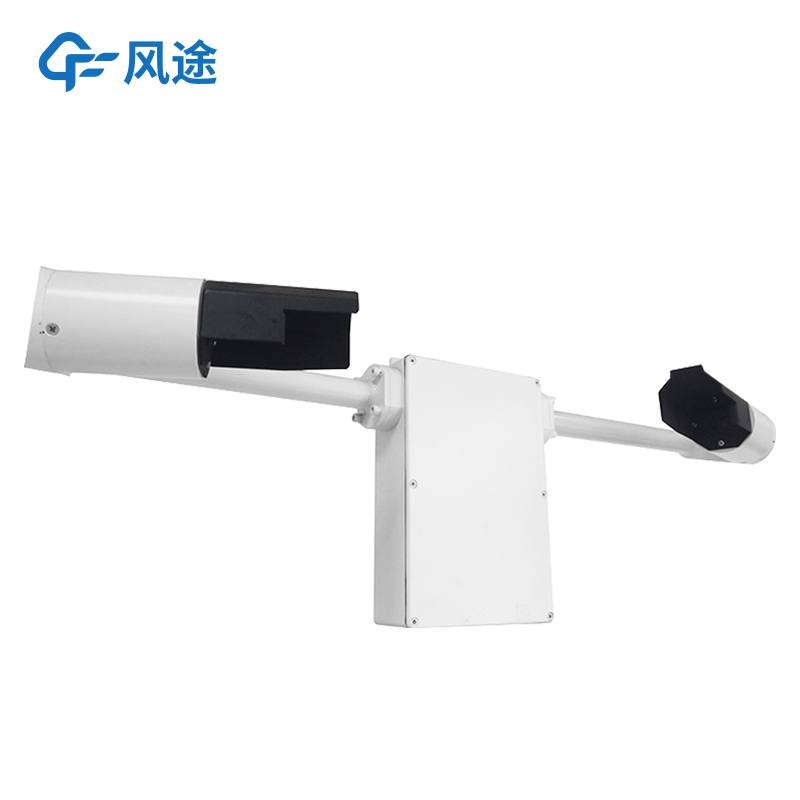Shandong Fengtu IOT Technology Co., Ltd
Sales Manager:Ms. Emily Wang
Cel,Whatsapp,Wechat:+86 15898932201
Email:info@fengtutec.com
Add:No. 155 Optoelectronic Industry Accelerator, Gaoxin District, Weifang, Shandong, China

Sales Manager:Ms. Emily Wang
Cel,Whatsapp,Wechat:+86 15898932201
Email:info@fengtutec.com
Add:No. 155 Optoelectronic Industry Accelerator, Gaoxin District, Weifang, Shandong, China
time:2024-12-11 10:01:16 source:Weather Station viewed:326 time
The 50KM Visibility sensor is a measuring instrument in industries such as road traffic and meteorology. It uses the forward scattering method to measure the total extinction coefficient of the air and thus obtain accurate visibility data.
This sensor uses an aluminum shell, which is anodized and painted, making it waterproof, dustproof and anti-collision, suitable for harsh outdoor environments. The transmitting and receiving lenses are installed downward, effectively reducing the interference of stray light such as sunlight and ensuring accurate measurement. It has a highly accurate weather phenomenon recognition ability, with a recognition rate of over 95% for weather phenomena such as fog, rain, snow, mixed precipitation, and clear weather. It has a built-in watchdog circuit that constantly monitors the operation of the device to ensure stable outdoor operation for a long time. The lightning protection design of the communication and power interfaces reduces the risk of lightning strikes and static electricity. It has a wide voltage supply of 12 - 24V and a power consumption of only 1W, and can be powered by solar panels and batteries for a long time. The digital interface adopts RS485 or RS232 and MODBUS protocol, and can directly output visibility values for multiple time periods, which is convenient and flexible to use.
In terms of technical specifications, the measuring range reaches 50km, and the accuracy for different measuring ranges is clearly defined. For example, the error is within ±2% within 2km. The repeatability is ≤4%. It can work in an environment of - 40℃ to 60℃ and 0 to 100% RH. The size is 610x230x360mm and the weight is ≤10kg.
During installation, the site should be selected in an open, flat and unobstructed area, away from various obstacles. The receiver should face away from strong light sources, and the transmitter and receiver should be in a north-south direction. The height should be between 1.5m and 3m. If it exceeds 3m, calibration is required. The installation steps are as follows: first prepare the column and install the clamp, then lift the instrument to the appropriate position and fix it with bolts. It is necessary to ensure that the openings of the receiver and transmitter are downward. Otherwise, reinstall.

The monitoring of negative oxygen ions in scenic areas is of great significance. On the one hand, negative oxygen ions are a direct manifestation of the ecological quality of scenic areas. A high concentration of them can purify the air, adsorb dust and germs. Tourists can relax their bodies and min...
In the modern meteorological monitoring system, the Visibility sensor has achieved functional expansion and upgrade. It can not only accurately monitor visibility but also identify various weather phenomena, so it is called a visibility weather phenomenon instrument.This instrument is mainly based o...
Rain is a natural necessity, but excessive rainfall can bring about serious disasters. Urban waterlogging can lead to traffic paralysis, and floods can submerge streets and houses, posing a threat to life safety. Heavy rainfall in mountainous areas is likely to trigger mountain torrents, landslides...
Drizzle is a precipitation phenomenon characterized by fine and gentle raindrops with a relatively small precipitation amount. The monitoring of rainfall is mainly achieved by measuring the precipitation amount per unit area within a unit of time.Meteorologically, the precipitation amount is usually...